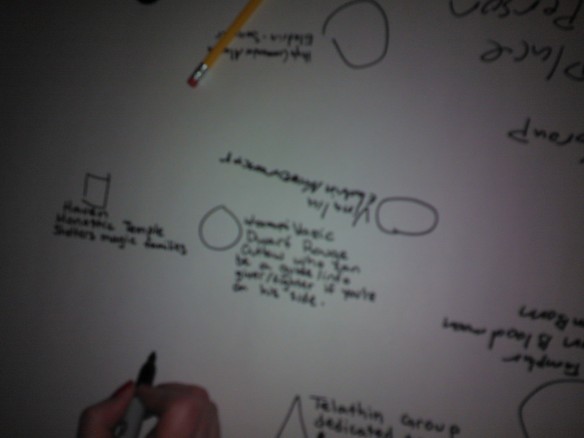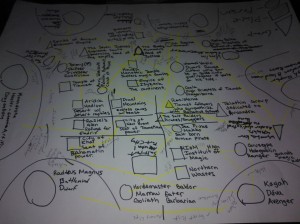It’s the last Tuesday of the month, and that means it’s time for more of those mental morsels, Dragon Snacks! This month, I’m talking about roleplaying. What follows are tips and tricks to make the roleplaying in your game smoother, better, and more consistent.
Why should you portray every NPC? Here’s the situation: two characters are talking to each other, neither are players, and you’re not the best at voices. So, these two similar sounding people are talking to each other, neither of them are using names, and you look like a crazy person. And this entire time, a group of people are idly watching you. Why not put one of them to work? Give the lines for one of those NPCs to one of your players. Let them portray the NPC. They’re going to hear this stuff anyway, why not get them more involved?
Your villain is wishy-washy and has a vague plan. This is a common problem (one I’ve had at least). Sometimes things just start to lose focus. The campaign is being changed by the actions of your players and you’re desperate for them to keep encountering your villain. You start changing things and putting your villain in situations that just don’t fit his goals. A great exercise to avoid this is to write your villains goal down. Write down his goal, his plan, and how he’s going to get there. This will keep you on course when you’re in the game and your group starts throwing curveballs at you.
How do you make it obvious that players are dealing with members of a certain group? There’s an easy way to solve this problem. Take three adjectives that describe a typical member of your group, write them down, and whenever they meet a nameless member of the group, keep those three adjectives in mind while portraying. For example, in my current campaign, there are a group of warriors dedicated to Bane (evil god of war) called the Wyrmbreaker Knights. If I was to describe them in three words, I’d say “driven, loyal, and cocksure.” Whenever they encounter a member of this group, he’ll act accordingly, and hopefully the players will be able to tell him over an NPC that isn’t a member of the Wyrmbreaker Knights.
There you have it. Some hints to help your roleplaying. Next week, I’ll write about the start of my new campaign. You know how I love beginnings.


